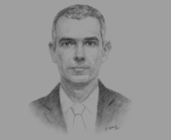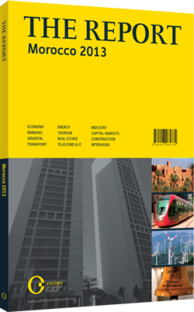OBG talks to Mohammed El Alaoui El Abdallaoui, General Manager, Moroccan Pension Fund (Caisse Marocaine des Retraites, CMR)

Interview: Mohammed El Alaoui El Abdallaoui
How do demographic trends affect the need to reform the pensions system?
MOHAMMED EL ALAOUI EL ABDALLAOUI: The retirement system in Morocco is strongly inspired by the Bismarckian system and aimed exclusively at organised groups in the public and private sectors. As a result, only about one-third of the population is covered. There are four main funds, of which two cover the private sector: the CNSS for basic coverage and the CIMR for complementary coverage. The RPC, which is managed by the CMR, and the RCAR, address the public sector. Studies have shown that the number of retirees is growing faster than the number of contributors. However, while the funds for the (semi-) public sector suffer from stagnating retirement numbers, those for the private sector benefit from demographic growth. The positive development of lifespan indicators (people are now becoming 1.2 years older every decade), and the fact that people start their professional lives at a later point (because of tertiary education) is not being taken into account in the statistics of most retirement funds. Still, current challenges cannot be ascribed to demographic developments only, as studies have shown that the generosity of the funds also affects their financial stability.
What key reforms are needed, and how can the coverage rate be improved?
EL ALAOUI EL ABDALLAOUI: The retirement system in Morocco is characterised by a lack of coherence. It hampers mobility and leads to unequal treatment of citizens, with respect to retirement benefits. Reforms to extend retirement benefits coverage require that the existing funds be financially stable. The informal sector poses a particularly delicate problem, in terms of extending benefits to the elderly, even if social benefits have been enshrined as an entitlement in the new constitution. With respect to the RPC system managed by the CMR, which will encounter its first financial imbalances in 2012, reforms will be needed that can turn around these imbalances within a decade from now (by 2021), in line with more systematic reforms in this domain. So we need a 5-10 year buffer that would allow us to implement the reforms needed. Extending coverage will contribute to combating or at least reducing poverty at a time when the majority of the elderly population does not have appropriate coverage (8% of the people over 60 in 2012, rising to 16% by 2030). In the end, what is required is a global vision on social security reform. However, reforming the system as a whole will be a huge project, requiring extensive preparation
To what extent is there a need to change the savings mentality among Moroccans?
EL ALAOUI EL ABDALLAOUI: Compulsory retirement systems generally guarantee a substitute income of about 40-60% of the last enjoyed salary by the time retirement age has been reached. So, one saves not only for the future, but also to mitigate unexpected risks – illness, for instance. If someone has no coverage, then savings will mostly be for the purposes of covering this risk, rather than providing for old age. This is why instituting a comprehensive medical insurance system is so important. There is the AMO for paid employees, and the Medical Assistance Scheme for the Economically Disadvantaged for the destitute, but there is a need to cover people belonging to neither category.
How do you see the future of retirement funds in terms of financing the economy?
EL ALAOUI EL ABDALLAOUI: The reserves collected by the four retirement funds in 2011 were over Dh212bn (€18.8bn) – 26% of GDP. However, because we are facing liquidity problems, without fundamental reforms we will remain more involved in medium-term investments. The savings rate will simply no longer suffice to cover the country’s investment needs, so a second related issue that needs to be addressed is the investment climate. The right reforms will allow for more profitable, longer-term investments, which will then attract more investors and also improve savings rates.
You have reached the limit of premium articles you can view for free.
Choose from the options below to purchase print or digital editions of our Reports. You can also purchase a website subscription giving you unlimited access to all of our Reports online for 12 months.
If you have already purchased this Report or have a website subscription, please login to continue.

